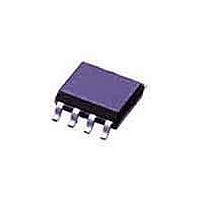PCA9550D NXP Semiconductors, PCA9550D Datasheet - Page 21

PCA9550D
Manufacturer Part Number
PCA9550D
Description
LED Drivers 2-BIT I2C FM OD LED BLK RST
Manufacturer
NXP Semiconductors
Datasheet
1.PCA9550DP118.pdf
(26 pages)
Specifications of PCA9550D
Number Of Segments
2
Low Level Output Current
24000 uA (Min)
Operating Supply Voltage
2.3 V to 5.5 V
Maximum Supply Current
500 uA
Maximum Power Dissipation
400 mW
Maximum Operating Temperature
+ 85 C
Mounting Style
SMD/SMT
Package / Case
SOT-96
Minimum Operating Temperature
- 40 C
Lead Free Status / RoHS Status
Lead free / RoHS Compliant
Other names
PCA9550D,112
Available stocks
Company
Part Number
Manufacturer
Quantity
Price
Company:
Part Number:
PCA9550D
Manufacturer:
NXP Semiconductors
Quantity:
1 880
Part Number:
PCA9550D
Manufacturer:
PHILIPS/飞利浦
Quantity:
20 000
Part Number:
PCA9550D,112
Manufacturer:
NXP/恩智浦
Quantity:
20 000
Part Number:
PCA9550D.
Manufacturer:
NXP/恩智浦
Quantity:
20 000
Company:
Part Number:
PCA9550DP
Manufacturer:
TOSHIBA
Quantity:
12 000
Company:
Part Number:
PCA9550DP
Manufacturer:
NXP
Quantity:
60 000
Part Number:
PCA9550DP
Manufacturer:
NXP/恩智浦
Quantity:
20 000
Company:
Part Number:
PCA9550DP-T
Manufacturer:
NXP
Quantity:
5 000
NXP Semiconductors
14. Handling information
15. Soldering of SMD packages
PCA9550_5
Product data sheet
15.1 Introduction to soldering
15.2 Wave and reflow soldering
15.3 Wave soldering
Inputs and outputs are protected against electrostatic discharge in normal handling.
However, to be completely safe you must take normal precautions appropriate to handling
integrated circuits.
This text provides a very brief insight into a complex technology. A more in-depth account
of soldering ICs can be found in Application Note AN10365 “Surface mount reflow
soldering description” .
Soldering is one of the most common methods through which packages are attached to
Printed Circuit Boards (PCBs), to form electrical circuits. The soldered joint provides both
the mechanical and the electrical connection. There is no single soldering method that is
ideal for all IC packages. Wave soldering is often preferred when through-hole and
Surface Mount Devices (SMDs) are mixed on one printed wiring board; however, it is not
suitable for fine pitch SMDs. Reflow soldering is ideal for the small pitches and high
densities that come with increased miniaturization.
Wave soldering is a joining technology in which the joints are made by solder coming from
a standing wave of liquid solder. The wave soldering process is suitable for the following:
Not all SMDs can be wave soldered. Packages with solder balls, and some leadless
packages which have solder lands underneath the body, cannot be wave soldered. Also,
leaded SMDs with leads having a pitch smaller than ~0.6 mm cannot be wave soldered,
due to an increased probability of bridging.
The reflow soldering process involves applying solder paste to a board, followed by
component placement and exposure to a temperature profile. Leaded packages,
packages with solder balls, and leadless packages are all reflow solderable.
Key characteristics in both wave and reflow soldering are:
Key characteristics in wave soldering are:
•
•
•
•
•
•
•
•
Through-hole components
Leaded or leadless SMDs, which are glued to the surface of the printed circuit board
Board specifications, including the board finish, solder masks and vias
Package footprints, including solder thieves and orientation
The moisture sensitivity level of the packages
Package placement
Inspection and repair
Lead-free soldering versus SnPb soldering
Rev. 05 — 13 October 2008
2-bit I
2
C-bus LED driver with programmable blink rates
PCA9550
© NXP B.V. 2008. All rights reserved.
21 of 26












